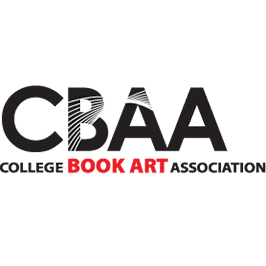In my most recent post, I argue that we have a responsibility, as artists and educators in the field of book art, to ensure access to the work that we believe is critically important. I recognize that it can be challenging to make this kind of space, particularly in an academic context. Institutions move slowly, politics are embedded but opaque, and resources are (usually) scarce. Add to this the fact that the field of book art encompasses a constantly evolving continuum of creative activity, which is not easily defined or conveyed, nor predictably valued at any given institution. Advocating for the work while facing these difficulties can be a daunting task.
As I previously acknowledged, partnerships and collaboration are essential, but a critical question remains–where and how do we locate our allies? With this post, I offer up several possibilities, based on the outreach events that I previously profiled, as well as my recent experiences with a collaborative project, Freedom of the Presses, a multi-site exhibition focused on the creative and democratic processes of 21st century independent artist's publishing, which is currently in full swing at my institutional home.
Academic libraries are, of course, natural partners. In all three of the collaborative interventions that serve as case studies for this post, the academic library plays a central, if not primary role in project development and implementation. At UCLA, the Activating the Archive project was made possible by the Center for Primary Research and Training, created by the UCLA Library “to integrate special collections materials more fully into the teaching and research mission of the university.” At Swarthmore, the libraries partnered with the Lang Center for Civic and Social Responsibility, which focuses on “Engaged Scholarship,” to enact their Friends, Peace, and Sanctuary project. At Ringling, the Brizdle-Schoenberg Special Collections Center participated in the co-curation , exhibition design, and installation of the Freedom of the Presses exhibition. In addition, the Alfred R. Goldstein Library served as the primary site for an associated book fair.
Campus galleries can also serve as ideal sites for collaborative interventions. Exhibitions organized in partnership with galleries provide space–literally–for critically important work in our field. These collaborative shows can also greatly expand outreach efforts. In the case of Freedom of the Presses, the Ringling College Galleries were able to directly reach ten times the number of potential visitors to the exhibition and associated programming than the Letterpress and Book Arts Center could engage on its own.
Non-academic organizational partners are also essential allies. They bring critical focus, alternative strategies, creative solutions, swift action, and meaningful engagement to our efforts to activate artists’ books. In the case of Swarthmore’s Friends, Peace, and Sanctuary project, the Philadelphia-based Nationalities Service Center plays a central role. With their mission to “prepare and empower immigrants and refugees in the Philadelphia region to transcend challenging circumstances,” the Nationalities Service Center facilitates meaningful, client-centered experiences for the Iraqi and Syrian refugees involved in the project, empowering both the organizers and participants to engage artists’ books as sites for activism. The Freedom of the Presses project at Ringling would not have been possible without Booklyn, Inc. The entire project was collaboratively developed with Booklyn's Collection Development Curator, Marshall Weber, from concept, to curation, to installation and programming, in an effort to stay true to the work–all of the artists and organizations featured in the exhibition approach artist’s publishing as a socially engaged practice. In addition to this integral collaboration with Booklyn, several other non-academic partners participated in the programming for the show, including EXILE Books, I Wish To Say, Bluebird Books Bus, NOMAD Art Bus, and SEA Change, a regional group of artists and curators dedicated to building awareness and support for socially engaged art practices. These organizations deepened understanding, engaged directly with the public, and provided a variety of accessible entry points to the exhibition.
As I continue to forge ahead with the goal to make space for critically important artists’ publications, I hope to locate additional allies within and beyond my community and current institution. For instance, where are our allies within self-organized student groups and among faculty on campus? How can I support the meaningful programming and outreach that is already taking place within and beyond our campus through departments such as student volunteerism and service learning, international student affairs, and student health services? Who are the non-academic partners I have yet to engage?
I invite our membership to consider questions such as these, and to share successful collaborations, emerging strategies, and possible sites for intervention in the comments section below.
Bridget Elmer is an artist living in Saint Petersburg, Florida. She is the co-operator of Impractical Labor in Service of the Speculative Arts (ILSSA) and founding member of Print St. Pete Community Letterpress. Bridget works as the Coordinator of the Letterpress and Book Arts Center at Ringling College of Art and Design and serves on the CBAA Board as Chair of the Publications Committee. She received an MFA and MLIS from the University of Alabama and her work is collected internationally.

